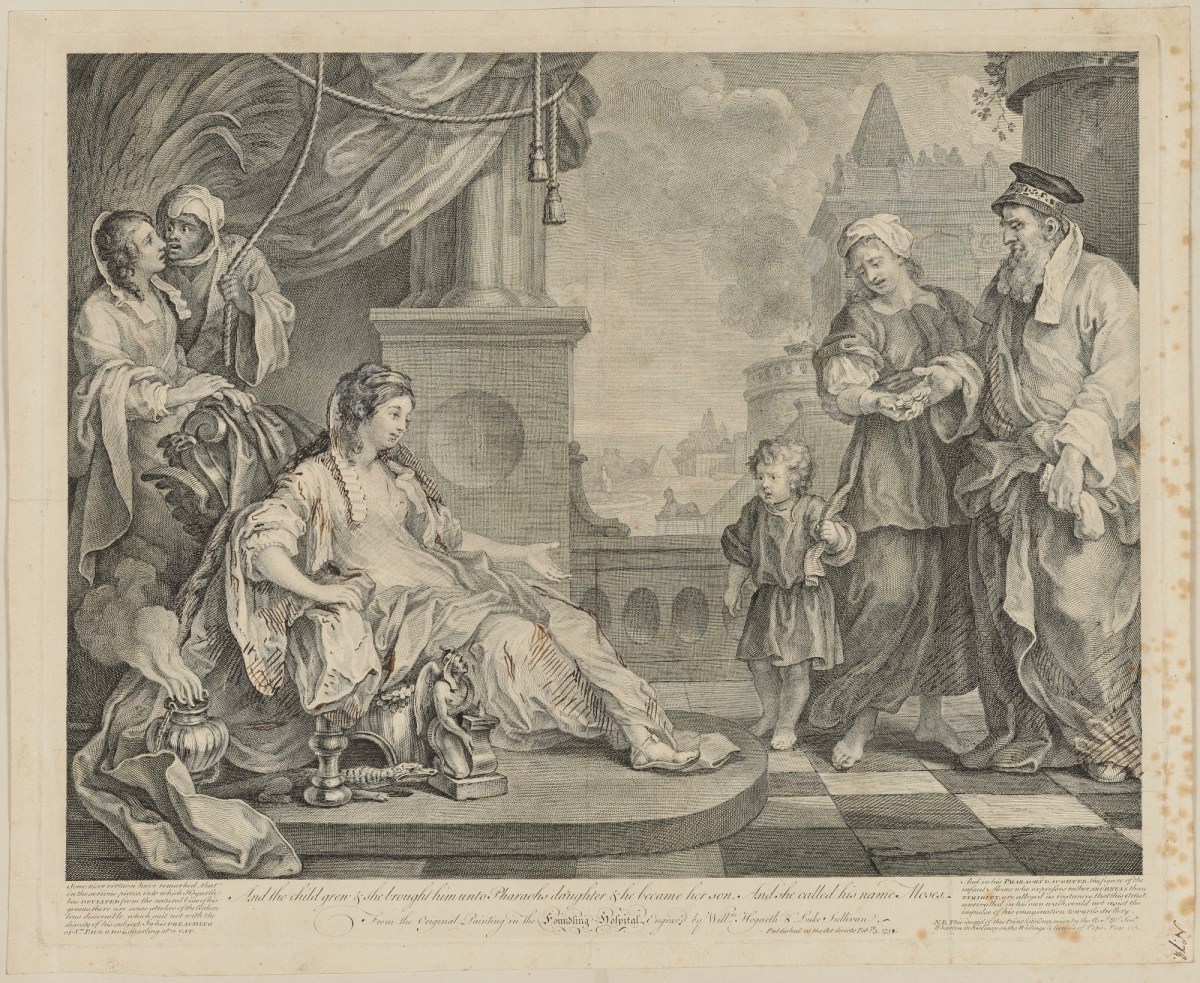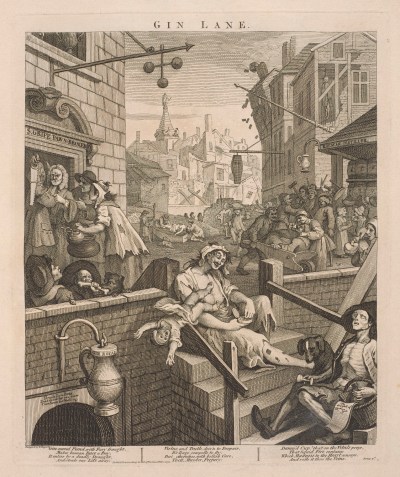
William Hogarth, Moses Brought to Pharaoh's Daughter, 1752-9.
390 mm x 505 mm. © Photo: Royal Academy of Arts, London. Photographer: Prudence Cuming Associates Limited.
This image is not available to download. To licence this image for commercial purposes, contact our Picture Library at picturelibrary@royalacademy.org.uk
Moses Brought to Pharaoh's Daughter, 1752-9
William Hogarth (1697 - 1764)
RA Collection: Art
Engraving reproducing (in reverse) the painting by William Hogarth which the artist presented to the Foundling Hospital (now the Foundling Museum) upon its completion in 1746. The painting was Hogarth's only Old Testament subject, and shows the moment when the infant Moses, who was found by the banks of the Nile by pharaoh's daughter, is given up to her to be brought up at court. The subject was appropriate for the Foundling Hospital, which raised abandoned children, and provided a depiction of the ideal to which it aspired.
This print was first published in 1752 alongside a print of another religious painting by Hogarth, Paul Before Felix. The subscription ticket for the two prints was a 'burlesque' of the latter (see 17/3548). This impression is from a later state published in 1759, which bears a long quotation from Joseph Warton's Essay on the Genius and Writings of Pope (1756). The passage reproduced contains critical remarks on Hogarth's use of Rembrandtesque devices in his history paintings, and Paulson suggests that Hogarth placed it on the prints (he did likewise with Paul Before Felix) as a study in comparison, thereby demonstrating that Warton's comments were false.
This impression has been heavily touched in pen and pencil- perhaps by Hogarth, making revisions for the fourth and final state of the plate. It is described as a touched proof in the contents page of the album it forms part of.
Object details
390 mm x 505 mm
Hogarth's prints. Vol. I. - [s.l.]: [n.d.]
Associated works of art
1 results
Start exploring the RA Collection
- Explore art works, paint-smeared palettes, scribbled letters and more...
- Artists and architects have run the RA for 250 years.
Our Collection is a record of them.




